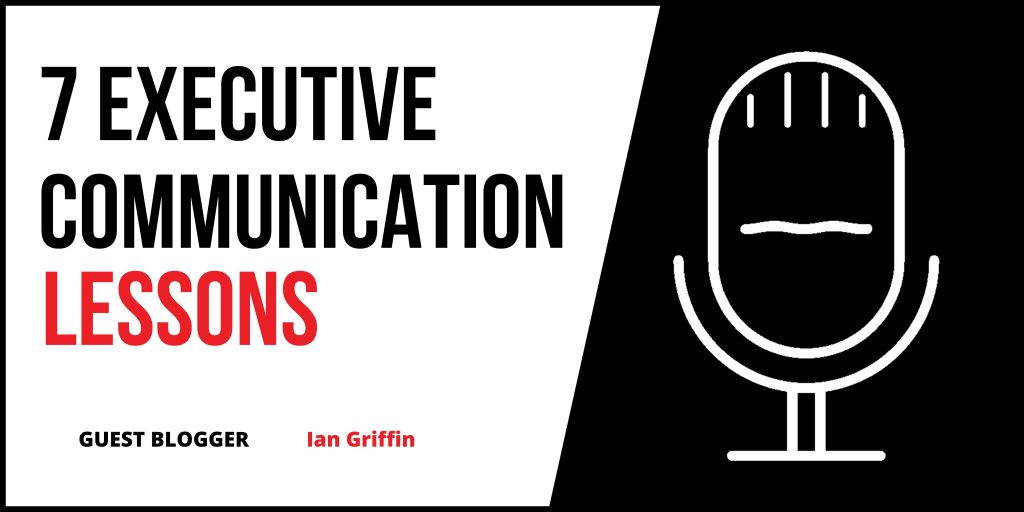
1: CEOs need a confident confidant
Sitting in meetings at major Silicon Valley companies such as Sun Microsystems, Hewlett-Packard and Cisco, I’m often the only person in the room without a few thousand people reporting to them or a multi-billion dollar target to meet. This can be an incredibly useful role that a CEO will come to value. As the speechwriter, I’m the one person in the room the CEO can turn to without an agenda of my own to advance. A CEO once told me “Ian, it’s lonely at the top. I’ve seen every scam that managers can pull to cover their rear ends. I need someone like you who can tell it like it is.”
Key Lesson: Speechwriters with the confidence to speak up become the confidant and trusted adviser of a senior executive.
2: Be an impartial observer
I was once brought in to edit an Annual Report for a European client with four separate divisions. My role was to resolve the different viewpoints of each group. The VP of Communications needed an outside consultant with the independence required to be able to write a cohesive document. Executive communications professionals are in a unique position to be an impartial observer in large organizations with multiple departments and competing interests.
Key Lesson: Take the initiative and tell the truth, no matter what certain executives want to hear. But don’t take sides within a company. We need to keep lines of communication open to all parties.
3: Take complexity out
Companies are filled with subject matter experts (SMEs) in engineering, finance, marketing, and sales. A speechwriter is a jack-of-all-trades, master of none. But that’s our hidden value to a company. It’s my job to know a little bit about everything the company does, and who to talk to when I need details. But lack of detail is rarely an issue. Time and again, I’ve asked SMEs for the background information needed for five to 10 minutes of a speech only to be given enough data for a two-day seminar. My job is to absorb enormous volumes of data and take the complexity out–to find a way to communicate the message without putting the audience to sleep.
Key Lesson: Learn to simplify. Only include what is necessary to convey what is essential. As Einstein said “Everything should be made as simple as possible, but not simpler.”
4: Tell compelling stories
As others have noted, people may not remember what you did or said, but they will always remember how you made them feel. Audiences forget facts, but they remember stories. Once you get past the jargon, the corporate world is an endless source of fascinating stories. I’ve found the best source of great stories for speeches come from informal chats when you are sitting down over coffee or, as I did one memorable afternoon, sharing a beer and pizza with the CEO in Boston’s North End. We talked about our time there as students. He shared a story about the lessons he’d learned outside the Harvard classroom that I used in a future speech.
Key Lesson: Always listen for stories executives tell about their childhood, family life, hobbies, early career and more. Dig for specifics. As speech coach Patricia Fripp says: “Specificity builds credibility.”
5: Embrace multimedia
The one-hour keynote is an endangered species. Conference organizers know audiences have short attention spans. Given travel budget restrictions, many organizations are turning to virtual meetings. Executives now need to feel comfortable on camera as well as on the podium.
My three years as a communications consultant at Cisco introduced me to the exciting possibilities of TelePresence meetings. I also enjoyed access to fully-equipped TV studios to produce All Hands meetings. But it was just as exciting working with the limitations of a simple cell phone to capture video that I edited with Windows Movie Maker. These days it’s not enough to write clever speeches, you need to keep current with the latest in multimedia technology.
Key Lesson: Digital media expands the boundaries of executive communications. Suggest it as an alternative to travel; use it to time-shift; create content that includes outdoor shots, audience testimonials and impromptu out-takes; record staff interviews; livestream events; experiment with transmedia storytelling.
6: Open up the backchannel
The audience is no longer silent. They might look like they are sitting quietly, but a raging debate on what Cliff Atkinson called The Backchannel can occur within and beyond the confines of the presentation venue.
I’m amazed at the resistance some speakers have to this. My experience curating Twitter hashtags for specific events shows that there’s a rapidly emerging opportunity to magnify the impact of a speech and increase the reach beyond the walls of the auditorium.
Key Lesson: Learn about and embrace the backchannel. Make sure your executive has a Twitter account and use it for shameless self-promotion and to stimulate a lively debate before, during and after each presentation they make.
7: Learn to ask the right questions
As a communications professional, it’s not your role to out-gun the SMEs, VPs and assorted executives in the C-Suite when it comes to content. Our role is to ask what headline the CEO wants the speech to produce, to find out the audience’s hot buttons, and to uncover the unique point of view the speaker brings to the issue.
If there’s one lesson I’ve taken away from the work I’ve done for clients, it’s to always be ready to ask “Why is that?” when they suggest points they want to make in a speech. When they give an answer, have the courage to ask the same question again. It’s often only after they answer for the third time that the core of the speech is revealed.
Key Lesson: Don’t hurry to get to a final draft. Be professional and respect deadlines, but keep asking questions until you reach an answer that will make the audience sit up and take notice.
What executive communications lessons have YOU learned? Share them by leaving a comment below.
Ian Griffin is a retired speechwriter and executive communications consultant who worked in the Corporate Communications departments at Cisco, Hewlett-Packard and Sun Microsystems. He is a past member of both the National Speakers Association (NSA) and Toastmasters. He lives in Northern California where he writes on developments in the kombucha beverage industry.
You can read more from Ian at his wildly popular blog Professionally Speaking
Dan Ram ignites the stage as an in-person event and virtual event MC/ Moderator & Speaker at over 100 events a year. He has shared the stage with international luminaries including President Barack Obama, Sir Richard Branson, Reid Hoffman, Nico Rosberg, and Grammy-winning artists and celebrities. He has also been recognized as a Top 40 under 40 leader 2020 as well as a Top 100 Yale Alumni in Technology 2021. Level up your communication skills through his course and mastermind “Speaking Success”. His passion is to inspire people with his motto ‘Start Now Start Simple’ in building a future we all want to live in.


Great blog Ian! I could see myself using these tips not as a speechwriter but just as someone who wants to build meaningful relationships with some of the movers and shakers in my industry! Thanks.
Thanks for great tips. I am not a speech writer but always looking to make my contributions better. Good ideas on making best use of the back channels and social media. Overdoing it makes the audience feel used. So a right balance is key.